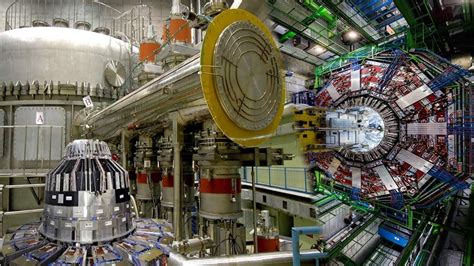China is aggressively positioning itself at the forefront of nuclear innovation, unveiling ambitious plans to build 150 new nuclear reactors between 2020 and 2035. As of the latest reports, 27 reactors are already under construction, reflecting the nation’s determination to scale up its nuclear capabilities. This massive deployment effort is backed by a whole-of-government strategy that not only offers extensive financing but also ensures systemic coordination among various stakeholders. The country’s rapid progress, particularly with its first fourth-generation nuclear reactor, underscores a technological leap that many analysts suggest puts China a decade ahead of its Western counterparts.
The secret sauce behind China’s success lies in its ability to execute detailed, state-backed plans that emphasize organizational and systemic innovations. Many of the technologies being deployed, such as fourth-generation reactors, have existed theoretically for several years. Yet, the critical difference is China’s capability to operationalize these technologies at scale. This is essentially where China excels while much of the Western world still gets bogged down in regulatory and logistical hurdles. In stark contrast to the Western timeline, China manages to complete reactor constructions in approximately seven years. Their speed and efficiency in deployment significantly outpace most other nations, including the United States, where similar projects linger much longer in red tape and resistance.
The discussion around China’s uranium reserves adds another layer of complexity to its nuclear ambitions. Unlike many nations that have minimal uranium reserves and must rely heavily on imports, China boasts substantial reserves. Commenters argue that this domestic availability of uranium aligns well with China’s nuclear strategy, reducing its energy dependence on less-than-friendly foreign sources. Yet, importing uranium remains a relatively straightforward and cost-effective endeavor, thanks to its high energy density. In fact, as some experts point out, stockpiling uranium is logistically feasible due to this property, which can buffer against geopolitical disruptions, ensuring a stable supply chain for China’s nuclear program.
But China’s prowess in the nuclear domain extends beyond just technology and resource planning. Their organizational capacity to implement state policies effectively has often resulted in a harmonious alignment of state and industrial goals. This state-driven approach is a double-edged sword; while it offers unmatched speed and coordination, it also raises questions of quality and oversight. Historical parallels reveal that state intervention can sometimes bypass crucial checks and balances, leading to longer-term issues. For instance, the rapid construction of reactors might compromise safety standards without rigorous international scrutiny. Nonetheless, instances of projects like the helium-cooled gas reactors (HTGR) and small modular reactors (SMRs) showcase China’s innovative strides while reducing notable fears about safety and efficiency.
Conversely, the Western approach, saturated with regulatory scrutiny, could serve as both an impediment and a guardian. Critics in Western countries argue that the bureaucratic delays stymie progress while advocating for a balanced framework that neither stifles innovation nor compromises safety. For example, constructing the scattered array of renewables, like solar and wind, across the West also suffers from similar delays. There remains a stark difference in how public sentiment and local resistance can lead to project cancellations or prolonged timelines, a challenge that China manages to navigate far more seamlessly.
Moreover, China’s foray into fourth-generation reactors introduces noteworthy advancements in reactor safety, waste management, and efficiency. These reactors are engineered to convert more of the nuclear fuel into energy and produce waste that remains radioactive for mere centuries instead of millennia. This shift towards safer and more efficient reactors could redefine public and international perceptions of nuclear energy, emphasizing its role as a viable, long-term solution for low-carbon power generation. The proposed small modular reactors (SMRs) also reflect this advanced thinking, potentially offering scalable, cost-effective solutions that are quicker to deploy.
In summary, while China’s rapid advancements in nuclear technology and infrastructure are impressive, they prompt a broader discussion on the ideal balance between state-driven initiatives and regulatory oversight. The West’s intricate checks are instrumental in ensuring safety and durability but often at the cost of speed and innovation. As the global energy landscape continues to evolve, the true test will lie in how these divergent models can either converge for mutual benefit or lead to a geopolitical energy race, potentially reshaping the global order of power and technology.


Leave a Reply